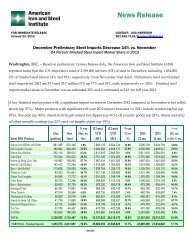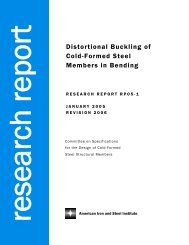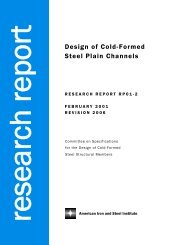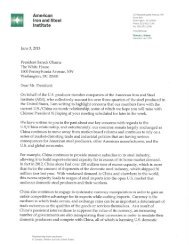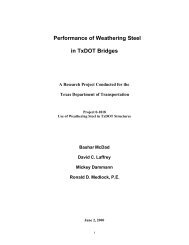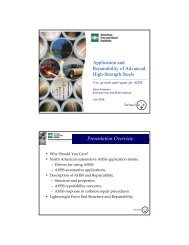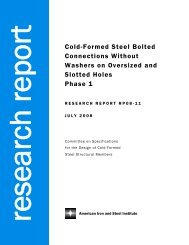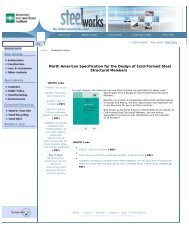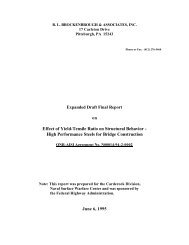Environmental Life Cycle Assessment of Southern Yellow Pine ...
Environmental Life Cycle Assessment of Southern Yellow Pine ...
Environmental Life Cycle Assessment of Southern Yellow Pine ...
You also want an ePaper? Increase the reach of your titles
YUMPU automatically turns print PDFs into web optimized ePapers that Google loves.
EXECUTIVE SUMMARY<br />
Figure 5. The drainage ditch in the foreground effectively altered wetland hydrology <br />
and was still functional several years following development <strong>of</strong> this pine plantation. <br />
Examples like this demonstrate the persistent wetland disturbance in the region. <br />
The first half <strong>of</strong> the 20 th century was the period since the baseline condition when the disturbance <br />
levels increased the most as a result <strong>of</strong> conversion to even-‐aged <strong>Southern</strong> yellow pine stands in the <br />
region. Since this period, the rate <strong>of</strong> wetland loss has declined by as much as 85% nationwide, when <br />
considering all causes. 30 However, the available data can only characterize impacts to wetlands in <br />
roughly the last 15 years. <br />
The scale <strong>of</strong> wetland conversion in the years for which data are available sets a lower bound on the <br />
disturbance level associated with Southeastern forestry; data from the United States Geological <br />
Survey (USGS) was used to understand the extent <strong>of</strong> wetlands converted for silviculture from 1986-‐<br />
2009. 31, 32,33 These data indicate that approximately 470,000 acres <strong>of</strong> freshwater wetlands were <br />
converted in this 23-‐year period nationwide, compared to approximately 14,000 acres <strong>of</strong> wetlands <br />
converted in the Mesabi Iron Range, the source <strong>of</strong> iron for North American steel production, since <br />
the late 1880s. <br />
Nationally, in the last 23 years, the wetland areas disturbed by silvicultural activities were 33 times <br />
greater than the wetland area disturbed in the Mesabi Iron Range in the last 130 years. In the early <br />
1900s, the rate <strong>of</strong> wetlands conversion in the Southeastern US was even higher. As such, the actual <br />
differential in wetlands conversion in the Southeastern US compared to the Mesabi Iron Range could <br />
be many times that level.<br />
30 U.S. Fish and Wildlife Service, Fisheries and Habitat Conservation: Status and Trends <strong>of</strong> Wetlands in the Conterminous <br />
United States, 2004-‐2009 (Report to Congress). T.E. Dahl. <br />
31 U.S. Fish and Wildlife Service, Fisheries and Habitat Conservation: Status and Trends <strong>of</strong> Wetlands in the Conterminous <br />
United States, 1987-‐1998. (Report to Congress). T.E. Dahl. <br />
32 U.S. Fish and Wildlife Service, Fisheries and Habitat Conservation: Status and Trends <strong>of</strong> Wetlands in the Conterminous <br />
United States, 1998-‐2004. (Report to Congress). T.E. Dahl. <br />
33 U.S. Fish and Wildlife Service, 2004-‐2009. <br />
April 2013 | ©SCS Global Services <br />
ES-‐ 16



